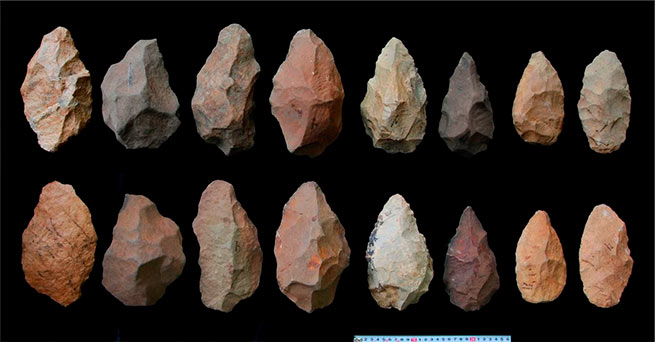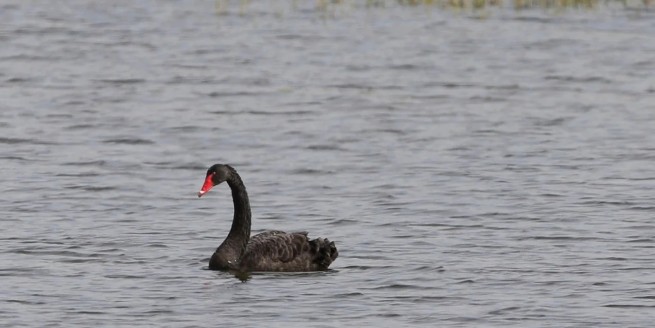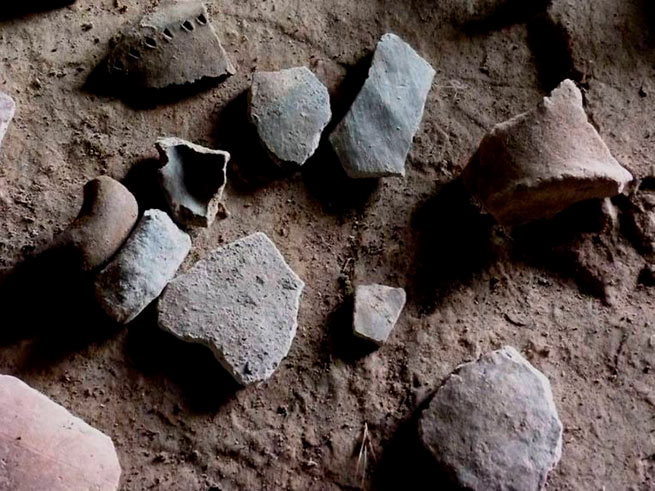A large number of stone axes – tools of the Paleolithic era – were identified and transferred to the Ephorate of Antiquities of Lesvos by physician and researcher Vassilis Kumarelas.
Kumarelas handed over to the authorities stone chisels, trihedrons, scrapers, picks, blades, flakes, stone cores and their separation products, which he discovered and collected from the shores of the coastal zone south of the city of Mytilene, where he bathes every summer.
Recall that in recent years, archaeological research has been carried out in Lisvori, during which many tools, hand scoops, scrapers, etc., dated 500-700 millennia.
The Commissioner of the Ephorate of Antiquities, Pavlos Triantafillidis, to whom the ancient instruments were handed over, told the state broadcaster ERT: “These are important finds that will be evaluated by the commission, which will be set up as planned. The sections will examine whether these finds are brought from the sea or if they are really the habitat of people from the Paleolithic period. In any case, these are important finds.”
In his report, Kumarelas notes that “the numerous methods, their diversity and the fact that specific bathing beaches were formed in 1981 by throwing debris from the earthworks of the southern extension of Mytilene Airport, suggest that an important Paleolithic settlement existed in the Kratigos area” .
It may have been similar and contemporary to that at Rodafnidia Lisbori, excavated by Nena Galanidou, Professor of Prehistoric Archeology at the Department of History and Archeology of the University of Crete, and dated to the Lower or Early Paleolithic.
Aheulian stone carving
If the finds of Kumarelas turn out to be modern finds excavated 10 years ago by Nena Galanidou in Rodafnidia in Lesvos, about 50 kilometers from Cratigo, then these will also be examples of stone carvings of the Aheuli technique, which were first found in southeastern Europe, that is, in Rodafnidia , and now in Cratigo.
According to Nena Galanidu“we are talking about the oldest technological achievement of the human race, since it was created in the period of about one and a half million years ago. And it was it that accompanied the ancestors of prehistoric man in their first exit from Africa and in the conquest of Eurasia. In other words, this is the oldest technology used by the first inhabitants of the Aegean on the island, in which nomadic creatures from opposite shores pass through the strips of land that appear from time to time when the sea level of the Aegean basin falls.
In other words, the excavations fuel the debate about the early colonization of Europe and migrations in Eurasia with archaeological material stratified and dated using absolute and relative methods. And this highlights today’s Aegean Sea as a space that connected the south of the Balkan Peninsula with Anatolia.”
Aheuli tradition
The name “Acheulian tradition” comes from the site of Saint-Aheul, located near Amiens in northern France, and is used to refer to a number of Lower Paleolithic tool-making traditions widespread throughout Afro-Eurasia.

A typical tool is a general purpose hand axe. A hand ax is a basic tool made by removing a relatively small number of chips (which can be used separately for other purposes) from a fist-sized stone, resulting in a tool that is blunt at one end but hewn to bear on the other side. sharp edge. These tools belong to later forms than were used by Homo erectus.







More Stories
Making a mockery of the Acropolis for the sake of tourism
How Plato spent his last night – what the found papyri showed
Eurovision 2024: the first rehearsal of Marina Satti in Malmö has ended